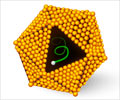Many HIV/hepatitis coinfected individuals on antiretroviral therapy (ART) experience liver enzyme elevation (LEE), and for that reason, caution is generally advised..
Many HIV/hepatitis coinfected individuals on antiretroviral therapy (ART) experience liver enzyme elevation (LEE), and for that reason, caution is generally advised when prescribing ART in this population. Results from the ICoNA (Italian Cohort of Naïve for Antiretrovirals) study indicate that coinfection itself may be the major risk factor for LEE.
The study investigated whether coinfected individuals on antiretroviral therapy had a higher risk of LEE than coinfected patients who were not on therapy. Results indicate this may not be the case.ICoNA is an Italian prospective observational study of HIV-infected patients enrolled when naïve for antiretroviral therapy. Included in this analysis were patients with one or more positive HCV antibody tests and more than one positive HBV surface antigen. Patients who began ART with one or two drugs were excluded from the analysis, as were those with signs and symptoms of acute hepatitis.
LEE was defined as alanine aminotransferase (ALT) levels (>5 x the baseline level or >3.5 x baseline when the baseline was >40 IU/l). Changes of ALT from time of enrolment in the study were analysed as a continuous variable to see if findings were affected by the choice of a cut-off point to define elevation.
HBV or HCV coinfection, use of ART, baseline ALT, and demographics were analysed using Poisson regression with generalized estimating equation correction to identify the most important predictors for the development of LEE. Demographics included age, body mass index, African origin, and risk factors for HIV infection.
The analysis included 5,272 patients of whom 30% were female, 39% were intravenous drug users, and nearly 48% were HCV/HBV coinfected. In the 18,259 person years follow-up, there were 275 episodes of LEE. The use of ART did not significantly increase the risk of LEE (adjusted RR 1.19); however, coinfection did (adjusted RR 5.07) with no significant differences between those taking ART and those who were therapy naïve. Males tended to have a higher risk of LEE than females.
The authors noted that one potential limitation of the study was that HCV-positive patients who were non-viraemic were analysed as being HCV coinfected; but, in a sample of the cohort, there was only a small proportion of patients with HCV antibodies and undetectable HCV RNA. Data on alcohol intake were also not included in the multivariate analysis.
Advertisement
Advertisement
SRM











